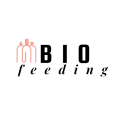The Healthy Way to Transition from Breastfeeding to Bottle Feeding
Understanding the Importance of a Healthy Transition
The transition from breastfeeding to bottle-feeding is a significant milestone in your baby’s life. It’s crucial to ensure this change is smooth and healthy to maintain your baby’s nutritional needs and emotional comfort. A healthy transition from breastfeeding to bottle feeding encompasses both the physical nutrition and emotional bond that feeding provides. In this post, we’ll explore some great ways to make this transition an enriching experience for both you and your baby.
The Significance of Timing in the Transition
One of the key factors in a healthy transition from breastfeeding to bottle feeding is timing. Do not rush the process; instead, let your baby dictate the pace of change. Starting the transition too early or too late can both pose challenges so, it’s recommended to introduce the bottle around one month of age to achieve the best feeding results.
Step by Step Guide to a Healthy Transition
Here’s a simple guide to facilitate a smooth and healthy transition from breastfeeding to bottle-feeding:
- Introduce the Bottle Slowly: Start by replacing one breastfeeding session with a bottle-feeding session. Gradually increase the number of bottle-feeding sessions over several weeks.
- Try Different Nipples and Bottles: Every child will have their preferences. If your baby is refusing the bottle, it may be worth trying different bottle and nipple types. This article offers some great tips on choosing the right bottle.
- Maintain Skin-to-Skin Contact: One of the main comforts for a baby during breastfeeding is skin-to-skin contact. Maintain this comforting aspect by holding your baby close during bottle feeds.
- Follow Your Baby’s Feeding Cues: Pay attention to your baby’s hunger and fullness cues, just as you would during breastfeeding. This will ensure your baby is getting the right amount of formula.
You can find more guidance on making the transition from breast to bottle feeding in this informative article.
Choosing the Right Formula
It’s equally important to choose the right kind of formula for your baby. The NHS offers fantastic resources on the different kinds of formula available and how to choose one that best suits your baby.
Solving Common Bottle-Feeding Problems
Bottle refusal and nipple confusion are common issues that many parents face during this transition. If your baby initially rejects the bottle, don’t worry. Patience and consistency are key.
These secret tricks for getting your baby to love the bottle may prove helpful.
Importance of Breastmilk in a Baby’s Development
Before we dive into the topic of transitioning from breastfeeding to bottle-feeding, it’s essential to underpin the importance of breastfeeding. It is widely known that breast milk plays a critical role in a baby’s development due to its optimal blend of nutrients. It also carries antibodies that protect infants against common childhood illnesses.
Respecting the Emotional Bond Formed through Breastfeeding
Apart from meeting your baby’s nutritional needs, breastfeeding also forms an emotional bond between the mother and the baby. It’s essential to respect this intimate connection while transitioning to bottle-feeding. Maintaining eye contact, having skin-to-skin contact, and comforting your baby during bottle-feeding sessions can assist in preserving this emotional attachment.
Making the Transition Easier for Your Baby
Success in transitioning from breastfeeding to bottle-feeding often depends on how relaxed and confident you and your baby are during the process. Experience has shown that the following approaches can be helpful:
- Feed when your baby is calm: It’s a good idea to introduce the bottle when your baby is calm and not too hungry, as they might be more amenable to trying new things.
- Have someone else give the bottle: Often a baby will take a bottle from someone other than their mother more readily when first starting.
Proper Bottle Feeding Practices
Proper bottle-feeding practices are paramount in providing adequate nutrition and emotional comfort to your infant. The American Academy of Pediatrics reiterates the importance of holding your baby while bottle-feeding rather than propping the bottle. Encouraging your baby to open their mouth wide and taking as much of the nipple into their mouth can also promote proper feeding habits.
Observing for Potential Bottle Feeding Issues
While most babies adjust to bottle-feeding with time, some may face issues such as gas, colic, or spit-up. If you notice any adverse reactions, consult a healthcare professional to ensure it’s not due to an intolerance or allergy to a certain type of formula.
Understanding When to Phase Out Bottle Feeding
While bottle-feeding provides a convenient alternative, it’s crucial to identify when to transition from a bottle to a cup. Phasing out bottle-feeding at an appropriate time is essential for your baby’s teeth and speech development. When your baby seems ready, follow the same gradual introduction practice, replacing one bottle-feeding session with a cup-feeding session. The American Academy of Pediatrics recommends transitioning fully to a cup by 18 months.
Be Patient and Stay Encouraging
Remember, each child is unique, and the transition can take time, patience and encouragement. The switch from breastfeeding to bottle-feeding is a significant change in your baby’s routine. Being sensitive, understanding, and patient are vitally important during this process.

